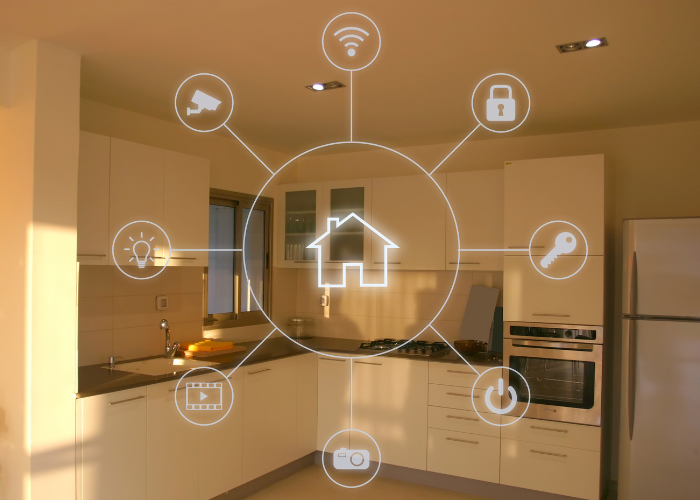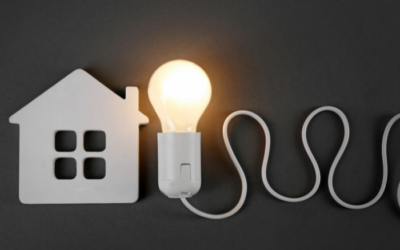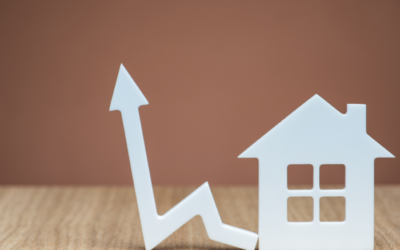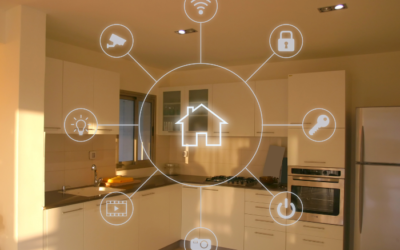How to incorporate modern technologies to manage home resources efficiently, saving energy and time?
Integration of Smart Home Technologies: Introduction
The continuous development of technology has a profound impact on our daily lives, and smart home technologies are no exception. A smart home integrates various systems and technologies to automatically control all essential home functions—saving energy and enhancing comfort.
Smart home technologies began to evolve in the late 20th century and gained wide popularity in the 21st century due to the rise of the internet and device-to-device communication (IoT — Internet of Things). Today, smart homes can control lighting, heating, ventilation, security systems, household appliances, and even water supply. These technologies not only save time but also significantly reduce energy consumption.
1. Why Smart Homes Matter Today
In today’s world, residential living conditions often suffer from poor resource management—from energy waste to inefficient water use. Smart home technologies empower residents to manage their homes and resources more effectively.
For example, traditional heating systems often run at the same level regardless of whether someone is in the space or not. Smart heating systems, however, adjust the temperature based on room usage, dramatically lowering energy costs.
By integrating systems from lighting to security, smart homes allow for complete automation of resources. This not only improves comfort but also leads to substantial cost savings. The core idea behind smart technology is that all devices and systems can be connected through a single management platform.
For instance, smart lights and heating systems can automatically adjust based on the time of day or the presence of residents.
1.1 What Is a Smart Home and How Does It Work?
A smart home refers to a residential system that allows users to automate and control a variety of core functions such as lighting, heating, cooling, security equipment, household appliances, and even water supply. These systems are connected via the internet, enabling remote control through smartphones or dedicated devices.
Smart home systems let users quickly change lighting modes, adjust temperature, and optimize energy use based on their habits and needs.
Smart technologies are directly tied to efficient resource management. For example, smart energy management systems can define when and how much energy each device requires. Smart heating systems can adjust temperatures based on occupants’ routines, saving energy when the house is empty or when everyone is asleep—without compromising comfort.
There are two main types of smart systems:
- Centralized Systems: Manage all devices from one platform (e.g., a smartphone or central server).
- Dynamic Systems: Adapt to user behavior using data and artificial intelligence (AI).
A smart home can “learn” the habits of its residents and adjust lighting and heating modes accordingly to create a more comfortable and energy-efficient environment.
2. Smart Systems and Their Integration
Smart home technologies are composed of several systems that work together to improve comfort, efficiency, and resource savings.
2.1 Smart Lighting Systems
Smart lighting allows automatic control based on:
- Time of day
- Presence of residents
- Amount of natural light
Lights can turn off automatically when a room is empty, significantly saving energy. Users can also create personalized modes like:
- “Movie mode”
- “Night mode”
- “Reading mode”
2.2 Smart Heating and Cooling Systems
These systems adjust the home’s temperature in real-time using smart thermostats that:
- Track movements
- Learn behavior
- Integrate weather forecasts
Users can set different temperatures for each room based on preferences—improving comfort and reducing waste.
2.3 Smart Security Systems (Monitoring and Cameras)
Smart security is a key component of modern homes. It includes:
- Surveillance cameras
- Motion sensors
- Smart locks for doors and windows
All of these can be remotely monitored and controlled. The system can alert homeowners about unusual activity via:
- Notifications
- Real-time alerts
- Email or SMS messages
2.4 Smart Household Appliances
Appliances such as:
- Refrigerators
- Washing machines
- Coffee makers
…can now be managed more conveniently and efficiently. For example:
- Smart fridges notify users when food runs low
- Washing machines can be scheduled and controlled remotely
2.5 Smart Air Ventilation and Purification Systems
These systems:
- Monitor indoor air quality
- Regulate humidity
- Automatically ensure a clean air supply
They also alert users about harmful particles or dangerous elements in the air.
2.6 Smart Control and Monitoring Platforms
These platforms integrate all home systems into a single interface accessible via:
- Smartphones
- Tablets
- Computers
With these platforms, users can:
- Monitor and manage devices in real time
- Create energy-saving settings
- Control home functions from anywhere
One of the most essential tools is the mobile app, which allows full control over home systems, even when you’re away—e.g., checking whether the lights or gas are turned off.
AI plays a major role by learning residents’ habits and offering suggestions to save energy. For example:
- Setting the optimal temperature or lighting based on the time of day
- Adjusting appliances before the user even interacts with them
3. Energy Efficiency: Real-Life Examples
Smart home systems have proven highly effective in reducing energy use. For example:
- A smart heating system can lower the temperature when a room is empty
- Smart lighting can turn off automatically when you leave the room
These simple changes lead to significant cost savings over time while maintaining comfort.
4. Security and Privacy in Smart Homes
Since smart homes rely on internet-connected devices, strong cybersecurity measures are critical. This includes:
- Protecting connected devices from cyberattacks
- Ensuring the privacy of user data
- Preventing unauthorized access to home systems
It’s vital to use secure networks, update devices regularly, and use encryption where possible to protect both the hardware and user privacy. All devices operating in smart home systems must be protected by special cybersecurity methods, such as encryption, multi-layer authentication, and antivirus systems.
The use of smart home technologies implies a high level of reliability to ensure the uninterrupted operation of systems.
Securing internal and external power supplies as well as internet connections is a priority to avoid equipment failures.
Smart home systems continuously collect data about user activity. Protecting this data properly is essential to prevent data leaks or misuse.
Future Smart Technologies: New Opportunities for Energy Saving
Smart home technologies are developing rapidly, and innovative solutions are expected in the near future that will make household resource management systems more efficient.
Deeper integration of artificial intelligence (AI) in smart homes will allow for more precise energy consumption control.
AI can learn user behavior and offer personalized solutions based on usage habits. For example, if the resident usually leaves for work at 9:00 AM, the system can automatically switch off or reduce heating or cooling devices during that time.
New-generation solar energy systems are also becoming essential for smart homes.
With increased efficiency and reduced panel prices, these systems are becoming more accessible for home use, in addition to smart energy monitoring devices.
The Future of Internet of Things (IoT) Devices
The development of IoT technologies has a significant impact on smart home technologies.
More and more devices are being integrated into internet-based systems, creating broad communication networks that allow devices to communicate with each other without human intervention.
For example, a refrigerator can “talk” to an online grocery platform and automatically order food when supplies run low.
These technologies not only provide convenience but also optimize resource usage, reducing unnecessary food waste.
AI technologies can also be combined with weather forecasts to predict when there will be a sharp increase or decrease in energy demand.
For example, if unusually high temperatures are expected tomorrow, AI can plan ahead and activate cooling systems to avoid extra energy consumption.
AI integration enables more effective energy management planning by forecasting complex situations and preventing unnecessary energy use.
In the future, advanced technologies are expected to include even more developed smart home equipment.
For example, we can imagine rooms that adjust based on human presence—modifying temperature, lighting, and even ventilation based on biological data.
New technologies for collecting and using data will allow smart homes to become more predictive and comfortable.
Economic and Environmental Benefits of Smart Homes
The implementation of smart home technologies not only increases comfort and safety but also ensures significant economic and environmental benefits.
Smart home technologies make it possible to drastically reduce household energy consumption, particularly by promoting the rational use of energy.
For example, smart lighting can reduce energy consumption by up to 50%, depending on the size of the home and user habits.
Preliminary calculations show that smart home investors can achieve around 20–30% energy savings with simple automated systems, while more complex and integrated technologies can ensure up to 50% savings.
Smart home technologies can be an investment that quickly pays for itself through savings.
For instance, efficient use of electricity and heating systems can significantly reduce household expenses.
Smart energy monitoring systems allow for more accurate assessments of energy usage, enabling users to plan their energy consumption and avoid unnecessary costs.
Thus, the investment can be recovered within 3–5 years, depending on the systems implemented and their energy-saving effectiveness.
Smart home technologies can also significantly reduce carbon emissions from households.
For example, by using smart lighting and heating systems, reduced energy use means lower emissions.
Smart home systems can also be integrated with renewable energy sources, such as solar power, enhancing their overall positive environmental impact.
Optimizing equipment and using renewable energy will lower energy expenses and contribute to environmental preservation.
The Smart Home Technology Implementation Process
The implementation of smart home technologies requires careful planning and a systematic approach to ensure that they are effectively integrated into the home management system.
Before installing smart home systems, it is necessary to conduct preliminary planning:
- Assessment of the current condition of the home,
- Selection of modern technologies based on the home’s size and needs,
- Evaluation of technical capabilities (power supply, internet connection, etc.).
Choosing the Right Equipment
Selecting the right technologies is a key step, as they must meet energy efficiency standards.
Users should focus on equipment that meets resource management requirements, includes smart features, and can be easily integrated into the overall home management system.
Smart home systems require periodic technical maintenance to ensure uninterrupted operation.
It is important to regularly check equipment, update software, and maintain devices in energy-efficient modes.
Government Incentives and Regulations
Many governments encourage the adoption of energy-efficient technologies, especially in smart home systems.
Governments in different countries offer tax incentives, subsidies, or special financing programs for the implementation of smart home technologies.
For example, for the installation of solar panels or energy-saving devices, many countries provide support to partially or fully offset the cost.
New legislative standards are being developed around the world that require smart technologies to be installed in new buildings and homes to meet energy efficiency and safety standards.
Conclusion
The adoption of smart home technologies is an important step toward a more efficient, comfortable, and secure lifestyle.
These technologies not only help save energy and time but also have a significant impact on reducing financial expenses and protecting the environment.
The application of smart home systems allows for efficient management of all home resources—saving energy, water, and even financial resources.
In the future, innovative technologies are expected to make smart homes even more integrated, automated, and efficient, and thanks to increased affordability, they will become accessible to a broader population.
